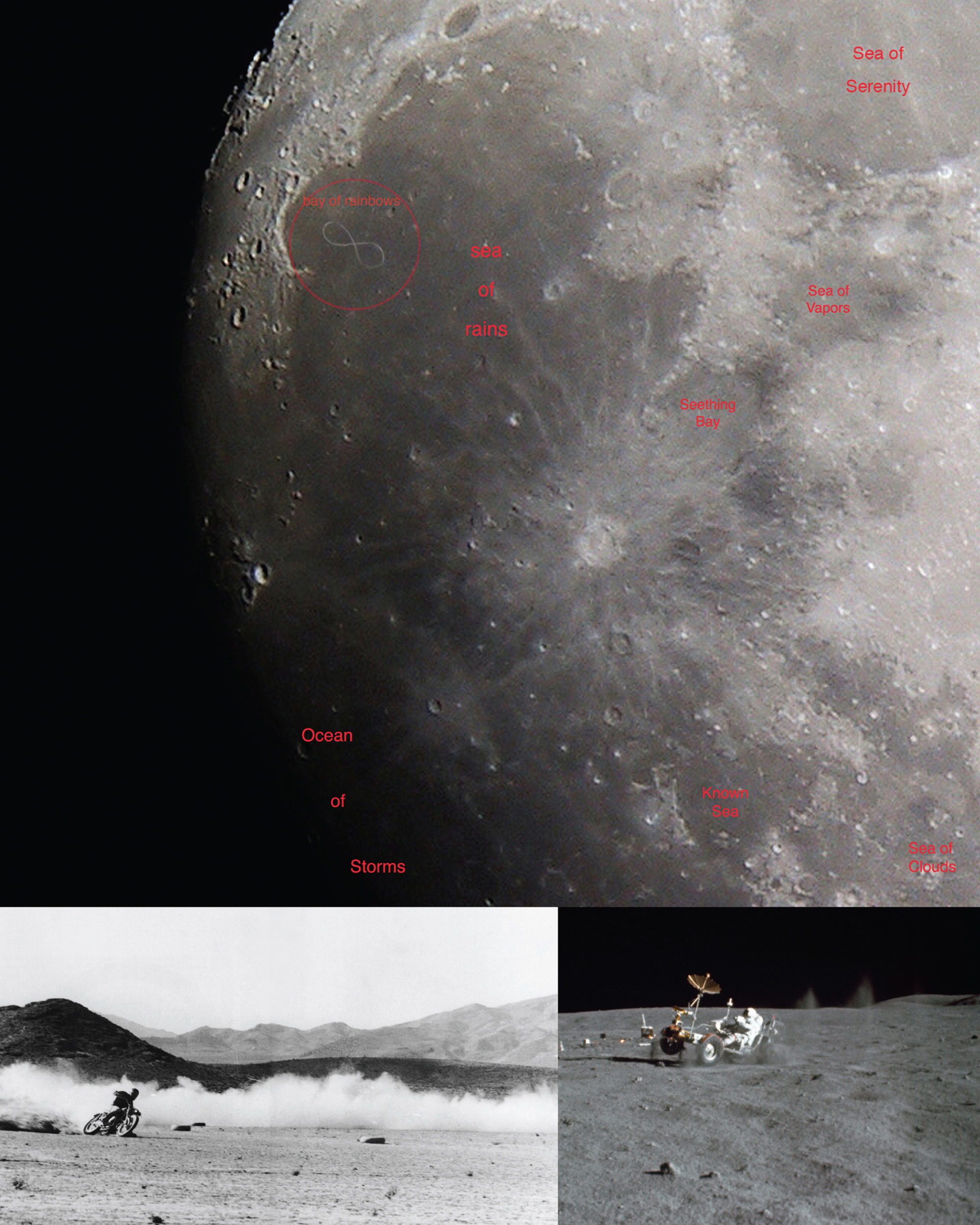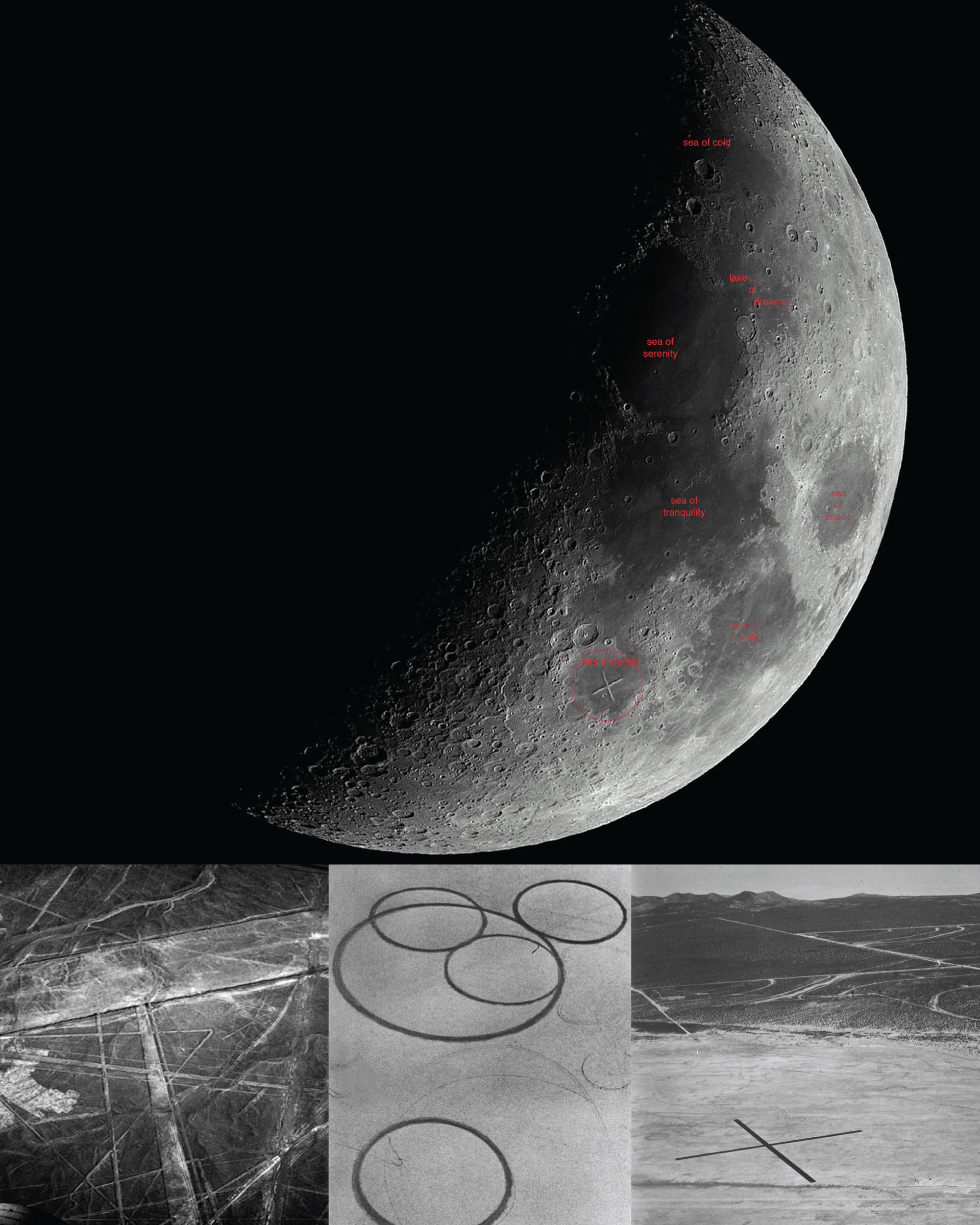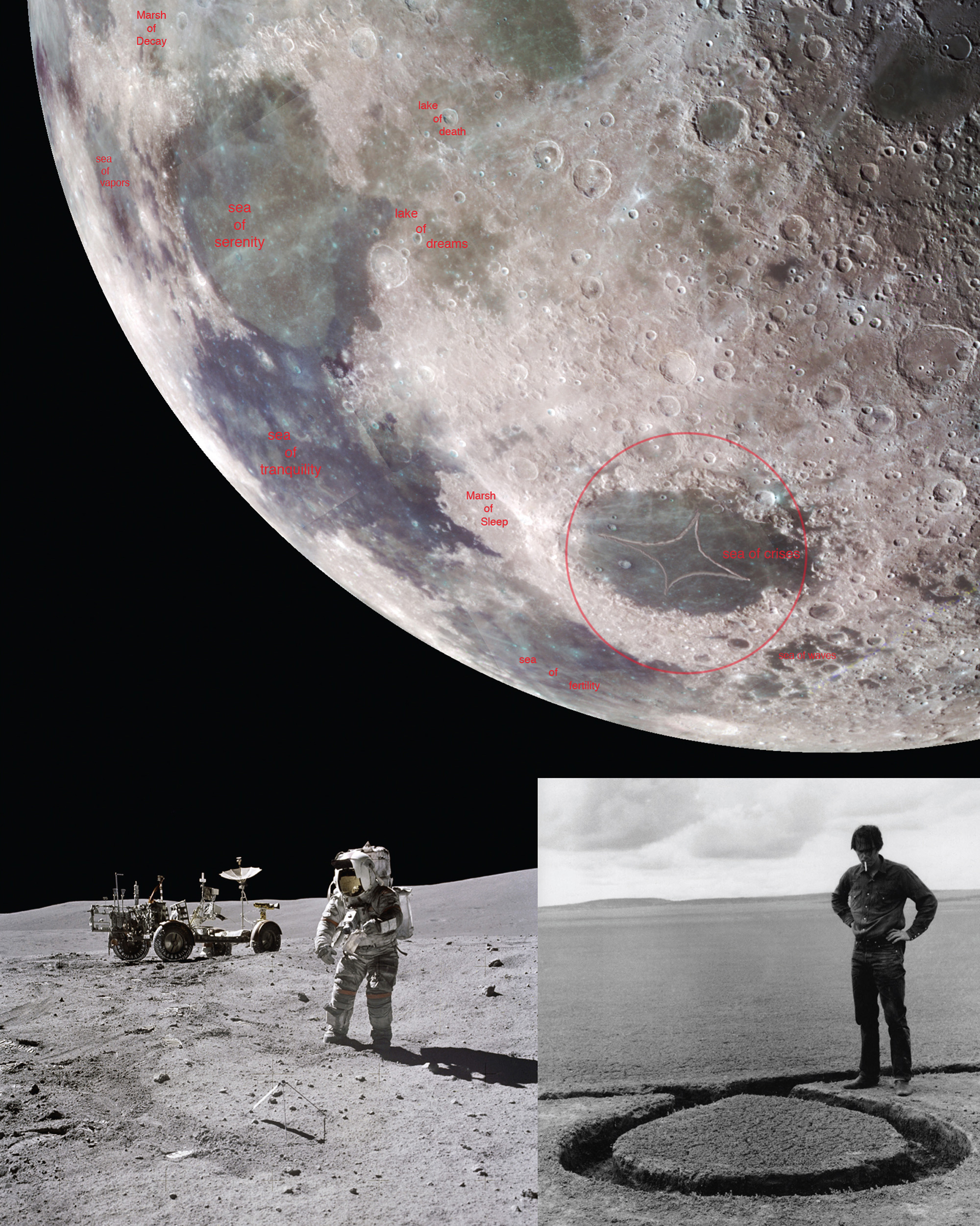Artist Project / Moonworks
Lunar Impressions
Craig Kalpakjian
In the late 1960s, artists like Michael Heizer, Robert Smithson, Dennis Oppenheim, and Walter De Maria began to make large-scale land art projects, or “Earthworks,” in the American West. One of Heizer’s first projects, Circular Surface Planar Displacement Drawing (1970), involved hiring professional motorcycle racers to ride in circular patterns on a dried lake-bed in Nevada, repeatedly tracing ephemeral patterns in the sand that could be seen from above. Similarly, Oppenheim’s Relocated Burial Ground (1978), consisted of a 610-square-meter X that the artist drew in the California desert using industrial primer material.
In 1997, the Robotics Institute at Carnegie-Mellon University began development of the Lunar/Planetary rover, Nomad. Larger than the Mars rovers, Nomad is an autonomous unmanned vehicle designed specifically for exploring the lunar surface. Able to guide itself across vast stretches of terrain, avoiding obstacles and finding the optimal route, Nomad was extensively tested in the deserts of South America, and has more recently been used in the Arctic Circle to find and retrieve small meteors that have fallen on the ice.
I propose to send a vehicle like Nomad across large stretches of the lunar surface—preferably the smoothest lunar “seas”—where over the course of many years simple patterns could be repeatedly traced out. By moving or disturbing the lunar soil and thereby exposing underlying layers, or by finding some other way of increasing the reflectivity of the lunar material (which is actually quite dark, similar to coal dust), a drawing or “Moonwork” could be created that would be visible from the earth, at least via telescope. The pattern should be recognizably man-made, one that could not occur through natural processes. Several possibilities are shown on the following pages.
Contemporary earthworks have often been compared to the Nazca lines in the Peruvian desert. These marks on the landscape have long puzzled scientists, leading to a variety of wild speculations about their origins—perhaps most famously in Erich Von Daniken’s bestselling Chariots of the Gods (1969), in which he conjectured that they were in fact created by visiting aliens. The Moonworks can perhaps be thought of as an inversion of this scenario, by making us on earth the viewers, from above, of our markings on the surface of another world where we ourselves are aliens.
If the lunar landing is thought to be one of the highest achievements of mankind, it is only fitting that art should accompany humanity’s journey into space. A visible trace will serve as both evidence of and a monument to our accomplishment. The Moonwork will be a kind of Mt. Rushmore for the twenty-first century. The first artwork made for all mankind, it will be available for viewing by everyone on the planet.
While there is no significant lunar ecology that the Moonwork might disturb, it will in fact be temporary in the scale of cosmic events, as it will eventually be erased by the slow bombardment of asteroids creating craters that constantly alter the lunar landscape. Indeed the lunar terrain can be seen as a vast recording surface, registering the impact of successive events in its history. The Moonwork, while not the first human addition to this process, will be the first in the name of art.



Craig Kalpakjian is an artist based in New York. See www.kalpakjian.com
Spotted an error? Email us at corrections at cabinetmagazine dot org.
If you’ve enjoyed the free articles that we offer on our site, please consider subscribing to our nonprofit magazine. You get twelve online issues and unlimited access to all our archives.